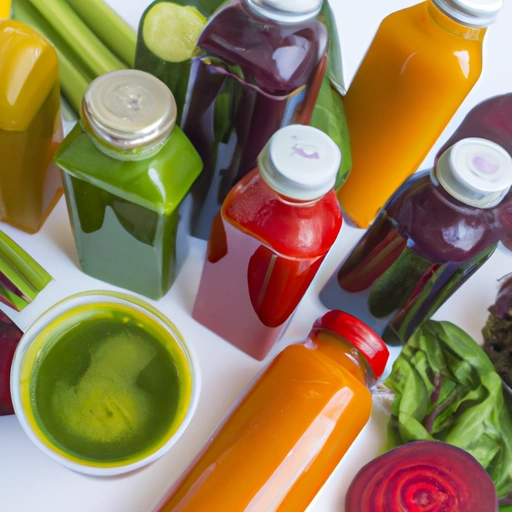Vegetable Juice
Description

Vegetable juice is a nutritious and versatile liquid made by blending or juicing various vegetables. It is a popular ingredient and beverage that packs a wealth of vitamins, minerals, and antioxidants, making it a favorite among health-conscious individuals and chefs alike. Vegetable juice can be made from a single type of vegetable or a blend of many, offering a range of flavors and health benefits.
Common uses
Vegetable juice is commonly used as a healthful drink, an ingredient in soups and sauces, a base for marinades, and a colorful addition to smoothies and cocktails.
Nutritional value
Calories
Calories in vegetable juice can vary widely based on the types of vegetables used. On average, an 8-ounce (approximately 240 milliliters) serving contains about 50 calories.
Protein
Vegetable juice typically contains about 2 grams of protein per 8-ounce serving.
Fat
Fat content in vegetable juice is usually negligible, often less than 1 gram per serving.
Carbohydrates
Carbohydrates range from 10 to 15 grams per 8-ounce serving, depending on the vegetables used.
Vitamins
Vegetable juice is rich in vitamins such as Vitamin A, Vitamin C, and various B vitamins, including folic acid.
Minerals
It also provides essential minerals like potassium, magnesium, and iron.
Health benefits
Drinking vegetable juice can support hydration, provide a concentrated source of nutrients, aid in digestion, and support overall health. The antioxidants present in vegetables help combat oxidative stress, potentially reducing the risk of chronic diseases.
Potential risks
Consuming excessive amounts of vegetable juice, particularly those high in vitamin K or oxalates, can pose risks to individuals with kidney issues or those on blood-thinning medications. Additionally, store-bought juices may contain added sodium or sugar.
Common recipes
Vegetable juice is used in recipes like gazpacho, vegetable soups, stews, and is a key ingredient in Bloody Mary cocktails.
Cooking methods
It can be consumed raw, used to sauté, or simmered in cooking processes.
Pairing with other ingredients
Vegetable juice pairs well with herbs, spices, citrus, and can complement or enhance the flavor profiles of various dishes.
Summary
Vegetable juice is a healthful and flavorful ingredient that has been used for centuries. With a rich history and a variety of uses, this nutrient-packed juice offers numerous health benefits while also adding depth and character to culinary creations. Whether enjoyed as a stand-alone beverage or utilized in recipes, vegetable juice is a valuable addition to any diet.